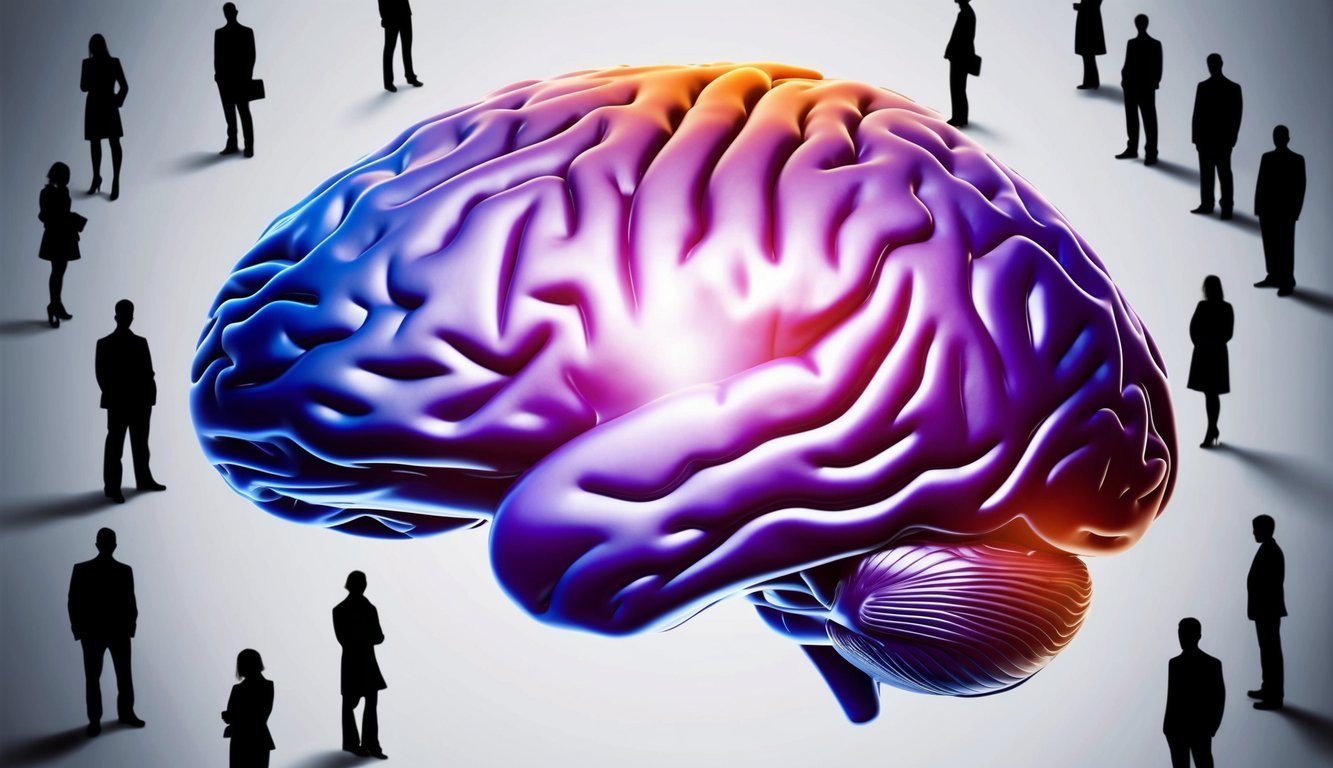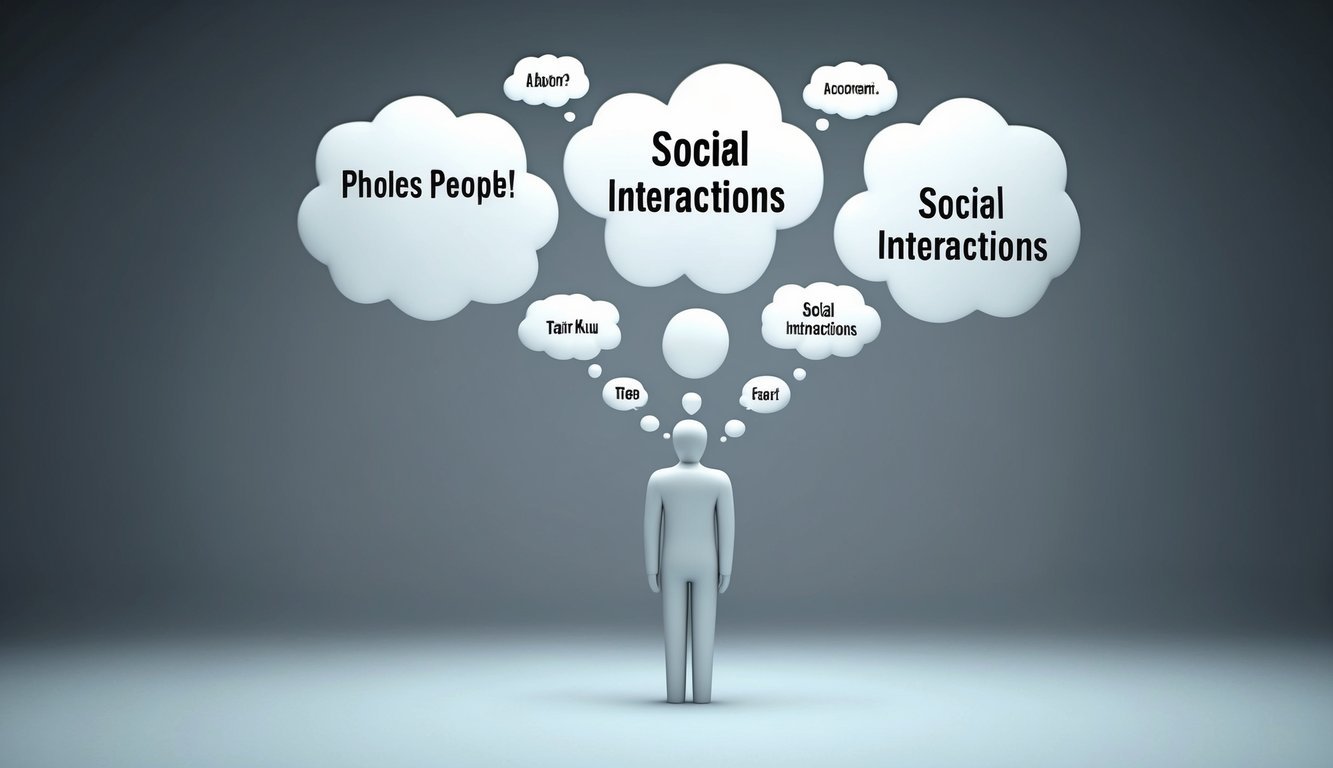PsychNewsDaily Publishers
100 Summit Drive
Burlington, MA, 01803
Telephone: (320) 349-2484
PsychNewsDaily Publishers
100 Summit Drive
Burlington, MA, 01803
Telephone: (320) 349-2484
Loneliness significantly impacts mental and physical health, affecting brain function, emotional processing, and memory, while increasing the risk of various health issues and cognitive decline.

Loneliness affects many people and can have significant impacts on mental and physical health. Scientific research suggests that lonely individuals may have a unique brain signature. This might stem from their tendency to imagine social interactions rather than experiencing them.
Studies have shown that loneliness can lead to changes in brain function. Researchers found that lonely people often have heightened activity in areas related to social cognition. This includes reflecting on past social events or imagining hypothetical interactions.
In neuroimaging studies, scientists noted alterations in brain regions linked to emotional processing. For example, the hippocampus, which is essential for memory, may change in response to feelings of isolation.
Moreover, loneliness can negatively impact physical health. Chronic loneliness has been connected to increased stress hormones and weakened immune responses. This emphasizes the importance of social connections for overall well-being.
Genetics also plays a part in how loneliness affects individuals. Some studies have identified specific genetic markers associated with feelings of loneliness. These markers can influence brain chemistry and emotional responses to social situations.
For instance, variations in genes that regulate serotonin, a key neurotransmitter, may affect mood and social behavior. Understanding these genetic factors can help researchers develop targeted interventions for loneliness.
Recent research suggests that individuals with a family history of loneliness may be at greater risk themselves. This highlights the interplay between emotional health and genetics, making it crucial to address loneliness at both levels.

Loneliness can change how the brain looks and works. More than just feelings of sadness, it can affect brain areas like the grey matter and important structures like the fornix and hippocampus. Scientists use magnetic resonance imaging (MRI) to explore these changes.
Research shows that lonely individuals often have reduced grey matter volume in certain brain regions. Grey matter is important for processing information and emotions. When a person feels lonely, their brain may adapt by changing the amount of grey matter.
In studies using MRI, scientists found that the default network, which helps with self-referential thinking, often has less grey matter in lonely individuals. This area is active during daydreaming or recalling past experiences. Reduced activity may mean less ability to engage in social thinking, leading to increased feelings of isolation.
The fornix and hippocampus play crucial roles in memory and emotional responses. The hippocampus is particularly important for forming and recalling memories about social interactions. Loneliness may lead to changes in how these areas function.
Studies indicate that the fornix connects regions important for emotional memory. When someone is lonely, changes in this structure can affect their ability to remember positive interactions. MRI data suggest that these changes contribute to the experience of loneliness, making it a vital area for further study.

Imagined social contact can influence how individuals think and remember things. This impact is notable among lonely people, who may create social scenarios in their minds. These imagined interactions can affect their cognitive abilities and memory, leading to interesting outcomes.
Imagined social contact can shape a person’s cognitive abilities. Engaging in these mental scenarios may enhance problem-solving skills. Lonely individuals often visualize social situations, which can stimulate their brains.
This practice might help strengthen connections between neurons. As a result, it can support their intelligence and critical thinking. Research suggests that the brain’s ability to simulate social situations can aid in effective decision-making. This means that even when feeling isolated, a person can keep their mind active through these thoughts.
Imagined social interactions play a significant role in memory. They help lonely people recall past experiences and reflect on personal growth. By visualizing connections with others, they create a mental space for revisiting emotions linked to those experiences.
This self-reflection can enhance their understanding of themselves and their relationships. When individuals think about social scenarios, they are more likely to remember feelings associated with those moments. This can be particularly valuable for improving emotional intelligence and self-awareness. Thus, imagined social contact can serve as a powerful tool for building richer memories and deeper insights into one’s life.

Social isolation can lead to significant changes in brain function and long-term health issues. People who experience isolation often face altering mental health challenges that can persist over time.
During the COVID-19 pandemic, many experienced increased isolation due to lockdowns and social distancing. Research shows that this kind of isolation can change brain activity.
Individuals may rely on imagined social interactions to fill the gap left by real connections. This can lead to a unique brain signature, which reflects their need for social contacts.
Key brain changes include:
Such changes can impact memory and emotional regulation, leading to further isolation and mental health issues.
Long-term social isolation can cause serious health problems. Studies show that it is linked to various mental health issues, such as anxiety and depression.
Common health problems associated with social isolation include:
The health impacts of isolation can be profound, affecting both mental and physical well-being. Recognizing these effects is essential for addressing the overall health of individuals facing loneliness.

Recent developments in technology provide new ways to study loneliness and its effects on the brain. Researchers utilize advanced tools to explore how loneliness impacts mental health. They focus on the unique brain signatures of lonely individuals, revealing how technology can aid in understanding their experiences.
Neurotechnology is playing a key role in studying loneliness. For instance, MRI data helps visualize brain activity in individuals experiencing loneliness. Researchers at McGill University have conducted studies demonstrating how certain regions of the brain respond differently to social scenarios.
Using psychological self-assessments alongside neuroimaging, they can connect emotional states with specific brain patterns. As a result, they gain insights into how lonely individuals often depend on imagined social interactions. This connection between brain activity and loneliness is vital for developing effective support strategies.
Artificial intelligence (AI) is revolutionizing how loneliness is understood and addressed. By analyzing data from various sources, AI can identify patterns related to loneliness. This includes social media interactions and online behaviors.
AI tools can also predict emotional well-being in users, offering personalized recommendations for improving social connections. Companies like Neuralink are exploring ways to integrate AI with neurotechnology, aiming to enhance communication and social interaction for those who feel isolated. These advancements hold promise for supporting mental health in a digital age.

Loneliness can have a profound impact on mental health. Research indicates that lonely people may show a unique brain signature. This could be linked to their high levels of imagined social contact.
One effective intervention is support groups. These groups provide a sense of belonging. They allow individuals to share feelings and connect with others. Participation can help reduce feelings of isolation.
Technological support also plays a role. Apps and online platforms can connect people. They provide instant access to social interactions. This can be especially helpful for those who find face-to-face communication challenging.
Brain scans have revealed insights into loneliness. These studies help researchers understand how the brain responds to isolation. With this knowledge, they can develop better interventions tailored to individual needs.
Programs promoting nature therapy show promise. Spending time outdoors can improve mood and decrease loneliness. Nature communications suggest that time in green spaces helps people feel more connected.

Loneliness can lead to distinct changes in how the brain operates and how someone feels emotionally and psychologically. This section explores common questions about the brain and loneliness, shedding light on the effects of social isolation and solitude.
Loneliness can change brain activities and even its structure. Research shows that lonely individuals often have different connectivity patterns in areas linked to social cognition. These differences may affect how they process emotions and interact with others.
Solitude can provide a chance for self-reflection and creativity. Many people find that time alone helps them recharge, leading to better focus and increased productivity. In this way, solitude may enhance certain brain functions, especially creativity and problem-solving.
Social isolation can lead to various psychological changes. People may experience increased feelings of sadness, anxiety, or stress. These changes can create a cycle where loneliness leads to negative emotions, which can make social interaction even more challenging.
Chosen solitude often results in more positive brain activity, as it allows individuals to engage in personal interests. In contrast, enforced loneliness usually brings about negative feelings and stress responses, impacting emotional processing and social cognition in adverse ways.
When lacking social interaction, the brain may increase its activity in areas related to imagination and memory. This compensation could explain why lonely individuals often have vivid thoughts about past relationships or imagined social interactions, creating a complex response to their isolation.
Chronic loneliness can lead to lasting changes in brain structure and function. Studies suggest that ongoing social isolation may affect areas involved in emotion regulation and cognitive processing. This can lead to challenges in social functioning and overall well-being over time.